By Michael D. Hull
General Bernard L. Montgomery, commander of the British 21st Army Group, was delighted to learn by secret cipher on December 23, 1943, that he had been chosen to lead three Allied armies in history’s greatest invasion, scheduled for the following May.
But he was appalled by the proposal for Operation Overlord drawn up by Lt. Gen. Frederick Morgan’s COSSAC (Chief of Staff, Supreme Allied Command) team, which called for three assault divisions to land on a narrow front at Arromanches in Normandy, followed by three other corps leapfrogging through them. This, Montgomery suggested, would cause “the most appalling confusion.” He viewed the invasion strength as too weak and the strategy wrong. The plan was “a dog’s breakfast,” sniffed the wiry, energetic victor of the Battle of El Alamein.
So, Monty swiftly formulated his own blueprint and summoned the Allied generals and planners to a series of briefings at his old school, St. Paul’s in West London, early in January 1944. He stressed that simplicity was the cardinal element in modern war and said the primary objective of the invasion should be to seize the major port of Cherbourg atop the western Cotentin Peninsula, where the Germans were believed to be weakest. While the U.S. First Army undertook this task, the British and Canadian Armies—comprising the British Second Army—would engage the main enemy forces on the eastern flank.
The British role, Monty emphasized, was to “protect the eastern flank of First U.S. Army while the latter is capturing Cherbourg” and to “offer a strong front against enemy movement towards the lodgment area from the east” while “First U.S. Army would break out southwards towards the Loire (River) and Quiberon Bay.”
Listening to the new plan, General Omar N. Bradley, the homespun commander of the U.S. First Army, was delighted, especially when Montgomery said that the British and Canadians would strike out toward Caen—a medieval cathedral city on the River Orne, nine miles inland from the English Channel coast—and then “operate to the south.” Caen, a key communications and transportation center, would thus be the “hinge” of the invasion, observed Bradley’s chief planner. Monty’s explicitness and simplicity were welcomed by Bradley, who had feared that because of “our existing resources” and “the strength of enemy forces in Northwest Europe,” the original Overlord plan was simply “impractical.”
Monty exuded confidence, as he had done on the eve of the climactic Battle of El Alamein, and brushed off the fears of many generals and planners that the invasion would fail. He promised success, and the chief American planner at COSSAC reported, “A wave of relief came over us. Monty’s action was like a breath of fresh air.” In a matter of hours, Montgomery had changed the Overlord plan from one in which almost no one believed to one in which all could place their faith.
The landings by the British, American, and Canadian Armies across five Normandy beaches early on Tuesday, June 6, 1944, proved costly yet successful. While men of Maj. Gen. J. Lawton Collins’s U.S. VII and Maj. Gen. Leonard T. Gerow’s U.S. V Corps went ashore at Utah and Omaha Beaches, respectively, on the western flank, Lt. Gen. Sir Miles Dempsey’s British Second Army landed three infantry divisions and three armored brigades on Sword, Juno, and Gold Beaches. The British mission was to seize Caen and anchor the Allied eastern flank, and within 21/2 hours 30,000 troops, 300 field guns, and 700 armored vehicles went ashore. Despite a perilous holdup on Omaha Beach, the Allied assault units carved out bridgeheads and began to move inland.
The success of the whole invasion depended on Lt. Gen. John T. Crocker’s British I Corps fighting through to join paratroopers of the British 6th Airborne (Red Berets) Division, who had landed beyond the River Orne, and holding on at all costs against the 21st German Panzer Division around Caen and the 12th SS “Hitler Youth” Panzer Division between Evreux and Gace. The 50th Infantry Division and the 8th Armored Brigade of Lt. Gen. Gerard C. Bucknall’s British XXX Corps went ashore on Gold Beach, the Canadian 3rd Infantry Division and the Canadian 2nd Armored Brigade landed at Juno Beach, and the British 3rd Infantry Division, the 27th Armored Brigade, and Royal Marine and Commando units went ashore at Sword Beach, near the mouth of the Orne. Landing farther west in the British sector were the 50th, 51st, and 7th Armored Divisions, all battle proven in North Africa.
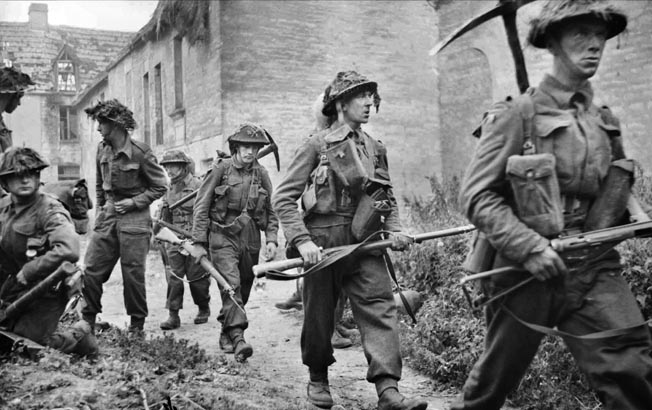
Despite fierce opposition on the beaches, the British landings went exceptionally well, although it took the Canadian 3rd Division more than two hours to crush German defenders in the Juno Beach sector and open inland exits. By noon on that “longest day,” the beachhead at Gold Beach had been extended to 21/2 miles deep and three miles wide. But, as the British and Canadian forces began to move inland, the resistance intensified. The Germans were determined to drive the invaders back into the sea and viewed the British-Canadian bridgehead as the more threatening because of their low regard for the Americans as fighting men.
Swiftly deployed infantry and deadly 88mm flak guns of the 21st Panzer Division blocked the British 3rd Division, preventing it from linking up with the embattled Red Berets for eight critical hours. Behind spearheading Commandos and Royal Engineer bridging tanks, an increasing traffic jam of arriving troops and vehicles hampered the armored units trying to thrust toward Caen.
Advancing on the city from Sword Beach, a British infantry brigade was led by the 2nd Battalion of the King’s Shropshire Light Infantry Regiment. It should have been supported by Firefly tanks (Shermans mounting long 17-pounder guns) of the Staffordshire Yeomanry, but they were trapped in a massive traffic jam on the beach. As they forged ahead, the gallant Shropshires were forced to take each German strongpoint as they came to it by orthodox fire and movement, and progress was painfully slow. The tanks caught up with the infantrymen in the afternoon, but then the column ran into the vanguard of the 21st Panzer Division. Its guns forced the Shropshires to go to ground three miles short of the outskirts of Caen.
However, the Mark IV panzers came under fire from the Staffordshires’ Shermans, suffered heavy losses, and withdrew. By nightfall on D-Day, Caen remained firmly in German hands, but the Sword bridgehead perimeter was intact.
Little was now going according to plan for the Allies, and Montgomery’s advance was stalling as powerful German armored reserves—including the II Panzer Corps, rushed from the Eastern Front—converged on the Caen area. Marshaled there were six of the eight enemy panzer divisions in Normandy. Monty’s forces repulsed many counterattacks, but gaining ground was increasingly difficult. It soon became evident that the road to Caen would be a bitter and costly one.
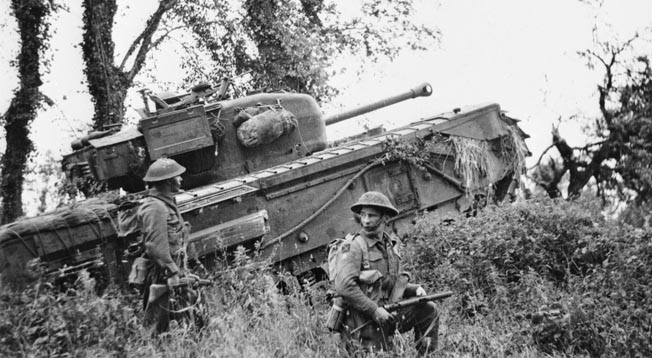
To the west, American operations also were not proceeding according to plan. The advance of General Collins’s VII Corps from Utah Beach was checked, and it was slow going for General Gerow’s V Corps as it pushed from Omaha Beach toward St.-Lo. Gerow’s drive ground to a halt, and Collins was forced to abandon a direct assault on Cherbourg.
Doggedly, the British and Canadian forces struggled inland. Units of the British XXX Corps seized the coastal village of Arromanches, the chosen site for a much needed Mulberry harbor, and patrols of the 50th Division probed the outskirts of the ancient town of Bayeux, 15 miles northwest of Caen, as enemy troops were hastily evacuating. By nightfall on D-Day, the division’s beachhead was six miles deep and six miles wide.
The Canadian infantry and armor from Juno Beach, meanwhile, pushed seven miles inland and captured the little town of Bernieres by dusk. Their heavy Churchill and medium Sherman tanks probed the main road between Bayeux and Caen. The British 50th and Canadian 3rd made more headway than any other Allied divisions on D-Day, and their foremost troops advanced to within three miles of the outskirts of Caen.
Planned and expected by Montgomery as a D-Day objective, the capture of Caen was to prove the most daunting challenge of his long career. Nazi dictator Adolf Hitler and his commanders believed that the outcome of the Normandy campaign depended on holding the city, so their best formations—including the powerful panzer corps and divisions and the 716th Infantry Division—were hastily deployed to mount defenses in depth on a relatively short front. The battle for Caen was to become a bloody crucible—the bitterest struggle of the Normandy campaign and the eventual undoing of Monty as Overlord’s ground forces commander.
Straddling the N-13 coastal highway to Bayeux and guarding the approaches to the plains leading to Paris 140 miles eastward, Caen—along with its adjacent Carpiquet Airfield—was of great strategic value to both sides. This was the third time in history that the city was a military objective of the British. It was besieged and captured by King Edward VIII’s bowmen and infantry in July 1346, taken again by the English in 1417, and held by them until 1450.
In June 1944, Caen—so near and yet so far to the British and Canadian soldiers—was part of Hitler’s lengthy and formidable Atlantic Wall. The odds were in favor of the enemy. The city, as were many other primary Allied objectives in Normandy, lay amid the bocage countryside, a tangled patchwork of steep earth banks, thick hedges, sunken roads, stone walls, and ditches. The Overlord planners had failed to foresee such difficult terrain, ideal for defense and almost impossible for Allied armor to negotiate. In front of Caen, hundreds of panzers, 88mm guns, mortars, and machine-gun nests were dug down out of sight. Field by field and farmstead by farmstead, the area was a warren of interconnecting and carefully camouflaged defense posts.
Along the British-Canadian front on the morning of June 7, the problem was whether to drive all out for Caen with the British 3rd Division or to battle through to the Canadians and consolidate their joint bridgehead. General Crocker chose the second course before hurrying to aid the British paratroopers fighting against heavy odds to hold the vital eastern flank.
On that same morning, General Montgomery arrived off the invasion beaches in a Royal Navy destroyer and conferred with Generals Bradley and Dempsey. Not all of the initial objectives—especially Caen and the airfields to the southeast—had been taken, but a sector 24 miles long and four miles deep had been established along the British beaches, and the Americans were moving inland. Monty was in a jaunty mood. On the morning of June 8, his destroyer grounded on a sandbank, and he sprinted ashore.
Monty quickly set up his advance headquarters in the village of Creully, east of Bayeux, and was soon visited by King George VI and Prime Minister Winston Churchill. There were some farcical elements to Montgomery’s arrival in Normandy. In Bayeux, he ordered a Russian major and well-known scrounger to find him a budgerigar and cage, and, through an aide, he whimsically prevailed upon a gracious Creully chatelaine to provide him with a chamber pot for his tactical caravan. Although well equipped and featuring portraits of Monty’s nemeses, Field Marshals Erwin Rommel and Gerd von Rundstedt, on its walls, the caravan’s toilet facilities were lacking. Then, Monty twice broke his false teeth on rock-hard Army biscuits.
While his British and Canadian armies began battering their way toward Caen, Allied battleships offshore and streams of bombers and fighter bombers kept the Germans under bombardment. Flexible and accurate Royal Artillery batteries zeroed in on threatening enemy moves. Meanwhile, the Allied strength increased steadily, with 20 divisions put ashore. With about 500,000 men now in Normandy, the Allies achieved a faster buildup than the enemy.
Nevertheless, the Allies, particularly Montgomery’s armies, faced serious problems. Bad weather along the English Channel coast delayed the landing of followup divisions and ammunition, and the British Army was struggling with a critical manpower shortage after five years of war. Reserves were scarce. Some of the best divisions were exhausted after hard campaigns in North Africa and Italy, and morale was shaky. Monty was forced to husband the forces as best he could.
Relentless Allied air attacks prevented Field Marshal Rommel, the commander of Army Group B, from bringing in fresh divisions. Much of their heavy equipment was destroyed by bombing and strafing, and the legendary “Desert Fox” was forced to commit his panzers in handfuls to plug the German line. Several panzer thrusts toward the Allied bridgeheads were blocked. The Allied forces held their lines, but the Germans fought just as stubbornly.
On the morning of June 9, in a field near the fishing village of Port-en-Bessin, Montgomery jabbed at a map spread over the hood of his Humber staff car and briefed Generals Dempsey and Bradley. He said he intended to encircle the panzer divisions dug in around Caen. The British 3rd Division, scheduled to capture the city on D-Day, was still four miles short. Caen was to be surrounded by the 51st Highland Division, the 4th Armored Brigade, the 7th Armored Division (the famed “Desert Rats”), and the British 1st Airborne Division. Meanwhile, the U.S. V Corps would thrust south and east to the Le Mans-Alençon area and beyond.
The Battle of Caen opened with a series of bloody engagements, and the Germans struck first, on June 10. Armored Battle Group Luck and a grenadier division attacked the 6th Airborne Division’s River Orne bridgehead and gained some ground before being halted with disastrous losses. Infantry casualties on both sides were severe, and the fighting became bitter after men of the 51st Highland Division—drawn in to strengthen threatened points—learned that the Germans had been shooting prisoners.
Savage hand-to-hand fighting involving the Black Watch Regiment lasted almost nonstop for three days and nights. A heroic night attack by 160 British paratroopers at Breville established the hold on the Orne bridgehead. At the cost of 141 casualties, the Red Berets wiped out a German battalion. The Highlanders, meanwhile, collided head-on with the enemy battle group, and the attacks ground to a bloody halt.
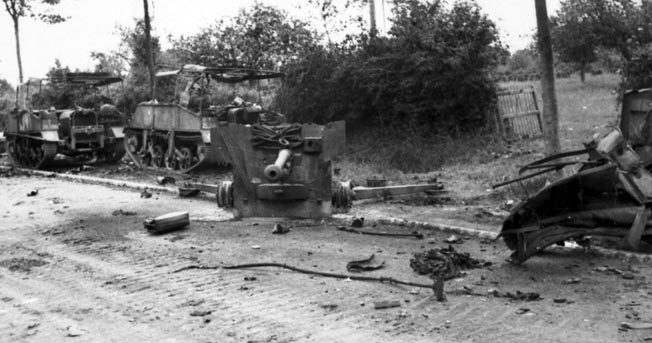
Fierce encounters continued in the struggle for Caen. A western threat saw tanks of General Fritz Bayerlein’s crack Panzer Lehr Division meet armor of the XXX Corps, while in the center sector Canadian infantrymen rode forward on tanks of their 6th Armored Regiment. The Canadians were in high spirits until they were suddenly ambushed by enemy grenadiers hidden in the cornfields. The infantrymen dropped off to give battle, and the tanks rolled on until they were blasted by German shellfire and waiting panzers and antitank guns. Fearful of being surrounded, the regimental commander withdrew his force to the Caen road.
The Canadians suffered heavily. In fields and orchards all along the line of their advance were crippled tanks billowing black smoke. The armored regiment had lost 37 tanks, and in the leading company alone the infantry had suffered almost 100 casualties. The Canadians bled at Caen, as they had at Dieppe and would later in the Reichswald.
Canadian infantry and tanks were hurried forward to dig in between Bray and Rots to block the 12th SS Panzer Division from reaching the Channel coast, and a force from the elite 46 Royal Marine Commando stormed into Rots and fought hand-to-hand with fanatical Hitler Youth stormtroopers of the Waffen SS. Casualties were high on both sides. Reports of the Germans executing prisoners were proven, and an Allied order of the day was published that prisoners would not be taken. Many of the Allied soldiers, particularly the Canadians, now went into battle fighting mad.
But, on both sides, the troops were fought to a standstill; both the German offensive toward the coast and the British-Canadian drives to encircle Caen shuddered to a halt. The sunny battlefield was littered with wrecked tanks, and the rolling fields of ripening corn were strewn with the blackening corpses of Allied and enemy soldiers.
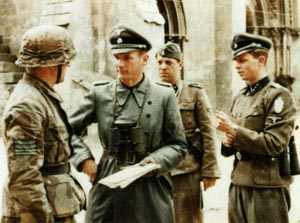
The only appreciable penetration by the British offensive was on the right flank where the 7th Armored and 50th (Northumbrian) Divisions, strengthened by some independent tank and infantry brigades, pushed from the west toward the strategic Villers-Bocage ridge. But their 40-ton Churchill, 30-ton Sherman, and light Cromwell tanks were blocked by the Panzer Lehr Division, armed with superior 45-ton Panther, 56-ton Tiger, and 67-ton Royal Tiger tanks. The high-velocity 75mm and 88mm panzer guns could penetrate Allied tanks, but the shells from the British and Canadian tank guns just bounced off the thick armor of the Tigers and Panthers. The Tigers outclassed anything the Allies could field against them.
In such unfavorable conditions, and without close infantry support, the Desert Rats were unable to make much headway. Fierce enemy counterattacks with armor were only beaten off after savage night fighting. The Northumbrian Division was engaged in heavy fighting on both flanks of the 7th Armored, with tanks and infantry of the Green Howards Regiment and the Dragoon Guards plunging through hedgerows and deep ditches toward Christot. Bitter close combat produced heavy casualties. Meanwhile, British and Canadian rocket-firing Hawker Typhoons ranged over the confused and bloody battlefield, blasting enemy positions.
Although the British and Canadian forces had failed to attain their immediate objectives, they were nevertheless fulfilling Montgomery’s requirement to attract the mass of German armor against them. “By the evening of June 12,” noted General Bradley, “we had celebrated our first week ashore without a single threatening counterattack on the American beachhead.” While Maj. Gen. Clarence R. Huebner’s 1st (Big Red One) Infantry Division reported “no real opposition” as it advanced steadily upon Caumont, 20 miles inland, Maj. Gen. Charles H. Gerhardt’s U.S. 29th (Blue and Gray) Infantry Division, which had suffered 1,000 casualties in two days in the bocage, opened the road through Isigny and outflanked the enemy defenses there. When Montgomery ordered Bradley to exploit rapidly southward toward St.-Lo and Caumont, he was able to do so immediately. By the evening of June 11, the U.S. 2nd (Indianhead) Infantry Division and the Big Red One were 14 miles south of their beachhead and level with the British. The only fresh troops the Germans could muster to oppose the GIs were two battalions of cyclists and six assault guns.
The ease of the American advance persuaded Montgomery to shift his main attack on Caen farther westward, where a system of minor roads offered suitable terrain for a thrust to outflank the Panzer Lehr Division. The XXX Corps battled forward to a heavily defended line of village fortresses in the Tilly-Fontenay area, and the 7th Armored Division swept in from the west toward Evrecy and the high ground between the Orne and Odon Rivers. Leaving the Northumbrian infantry locked in battle with Panzer Lehr, the Desert Rats drove through the American sector and a gap in the enemy defenses to come in behind the panzers at the town of Villers-Bocage, southwest of Caen.
On the morning of June 13, Cromwell and Stuart light tanks, half-tracks, and Bren gun carriers of Lt. Col. Arthur Cranley’s 4th County of London (Sharpshooters) Yeomanry advanced six miles behind the enemy lines and entered Villers-Bocage unopposed. Riding in the halftracks were men of the Rifle Brigade. The closely packed column rumbled through the town while joyous citizens cheered and headed for Hill 213, dominating the national highway leading straight to Caen. The British vehicles rattled triumphantly toward the vital hilltop. But waiting behind the crest were four Tiger and two Mark IV tanks of the 501st SS Heavy Tank Battalion and a strong infantry force.
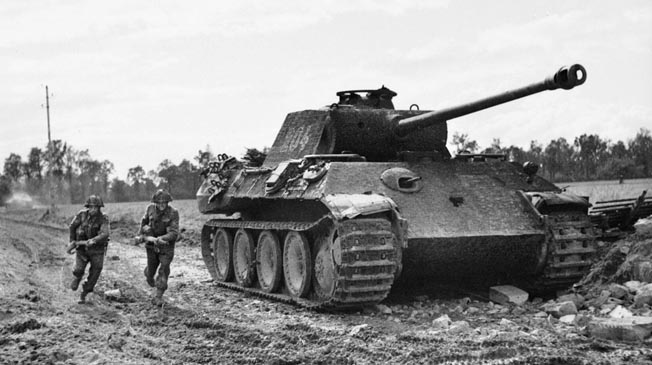
While the British soldiers were brewing tea, the Germans opened fire. The audacious panzer battalion commander, 25-year-old Lieutenant Michael Wittmann, led the assault by blasting the half-track leading the British column and leaving it blazing and blocking the road. His Tiger ground forward along the line of British vehicles, picking them off one by one, while the other panzers surged out to complete the annihilation of the Desert Rats’ spearhead. The British tankers and infantrymen fought back desperately. A Rifle Brigade six-pounder gun hit three enemy tanks before being destroyed by a direct hit, but the Tommies did not have a chance. The Cromwells were outgunned, and their shells bounced off the panzers’ thick armor.
The British lost 25 tanks, 14 half-tracks, and 14 Bren gun carriers through the leadership of Wittmann, a panzer ace on the Eastern Front credited with 119 enemy tanks destroyed. Viscount Cranley and many of his men were captured. Wittmann’s feat at Villers-Bocage bought time for the 2nd SS and 2nd Vienna Panzer Divisions to reach the area before the arrival of British reinforcements, which were delayed for two days because of rough seas in the English Channel.
The fighting raged on until dark in Villers-Bocage. Brigadier Robert “Loony” Hinde, commander of the British 22nd Armored Brigade, had vigorously organized the defense of the town, and when the panzers rumbled in they were confronted by infantrymen of the Queen’s Regiment. Using antitank guns, PIAT rocket launchers, and sticky bombs at close quarters, the Tommies stalked the panzers and destroyed 11 of them. There was a bizarre episode during the action when men of the local fire brigade dashed out to try and extinguish the flames from blazing German tanks.
After the battle, and unable to exploit its daring penetration, the British decided to pull back the undergunned 7th Armored Division. The tankers and infantry had fought bravely against heavy odds, but Caen was still out of reach. The setback at Villers-Bocage was blamed on sloppy tactics and a failure to reinforce the Desert Rats while the Germans were in trouble. “The whole handling of that battle was a disgrace,” said General Dempsey.
The enemy pressure did not let up. On June 14, panzers and grenadiers assaulted a 1,000-yard-by-700-yard defensive box into which the 7th Armored had formed itself. After fierce fighting, the Germans were blasted by the division’s artillery firing point-blank over open sights. American medium guns around Caumont joined in, and the enemy withdrew. Eventually, covered by Allied artillery and a Royal Air Force night bombing attack, the division pulled back seven miles. Its new line extended from just west of Villers-Bocage to ground held by the U.S. 1st Division near Caumont.
This was the Desert Rats’ first taste of defeat since El Alamein. Even though they had destroyed dozens of enemy tanks and killed many of their infantry, it was a bitter experience. They now had to await the arrival of an additional armored brigade, delayed in landing, before attacking again. Had the 150 tanks and an infantry brigade arrived on schedule, the right hook at Villers-Bocage may well have succeeded.
General Montgomery now decided to go on the defensive before Caen and to exert pressure around Caumont. He had ordered Bradley to hold the town firmly while Collins’s corps cut off the Cotentin Peninsula and seized Cherbourg. “Caen is the key to Cherbourg,” said Monty. His immediate objectives were Caen and Cherbourg and expanding the bridgehead’s central sector to Caumont and Villers-Bocage. Supported by RAF Lancaster bombers, the U.S. V Corps had pushed through the Foret de Cerisy and penetrated the outskirts of Caumont, while the U.S. VII Corps had taken Carentan. Bradley now ordered his 14th Corps to attack toward St.-Lo.
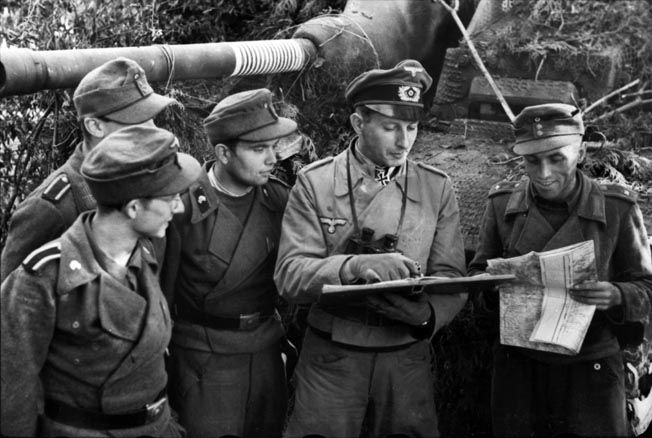
As the British and Americans consolidated, Field Marshal Rundstedt appealed urgently for reinforcements. He had committed three additional panzer divisions and two infantry divisions to contest the British advance, which was his main danger. But he had been unable to concentrate his armor to breach the Allied bridgehead, and there was no question of retiring to a new line. “Every man shall fight and die where he stands,” ordered Hitler from his bombproof bunker hundreds of miles away.
Montgomery had hardly switched his attack to Caumont before the 2nd Panzer Division pushed in that direction and a major battle erupted there. “So long as Rommel uses his strategic reserves to plug holes, that is good,” the hopeful Monty reported to his superior, General Dwight D. Eisenhower. It was a fierce melee at close quarters in the bocage around Caumont, and the Germans were initially superior. The earth shook, and steel splinters rent the air as British and American artillery loosed a furious bombardment at the advancing enemy, and the panzer veterans of the Eastern Front had seen nothing like it.
Royal Artillery crews handled their manually loaded 25-pounder field guns with such rapidity and effect that the Germans believed they were power operated. As soon as the guns had ceased, RAF Typhoons swept out of the morning mist at treetop height and savaged enemy positions and vehicles. The smoldering battlefield was soon strewn with screaming wounded men and mutilated farm animals.
Despite its mauling, the hardened 2nd Panzer Division extricated itself and, with more dreadful losses, captured Launay and St. Germain d’Ectot on its right flank on June 17. On the left, the panzers reached le Quesnay but suffered heavily again when British tanks and infantry counterattacked. After desperate house-to-house fighting and a creeping Allied barrage, the Germans were pushed back.
The 2nd Panzers returned to the attack on June 18 and pushed through to Briquessard, but at a fearful cost. After having tasted heady victory in Poland, at the Maginot Line, at Boulogne, in Greece, and in the suburbs of Moscow, the German division was being decimated in Normandy. Although the British and Canadians had suffered greatly, they were achieving what Montgomery intended—the annihilation of the vaunted German armor. He reiterated that his general aim remained “to pull the Germans on to the British Second Army and fight them there so that the U.S. First Army can carry out its task easier.”
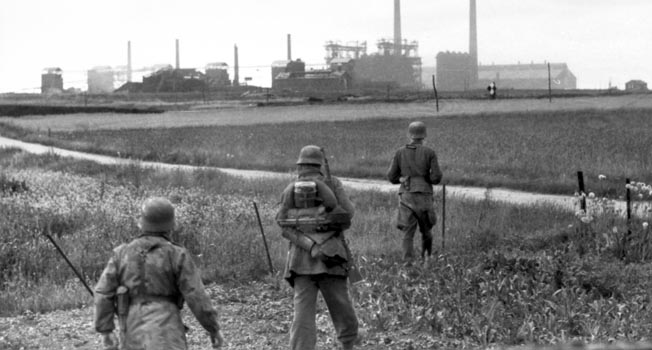
Monty continued to mount attacks that were costly to his own and enemy troops, forcing Rommel to deploy his panzers as dug-down artillery. General Sepp Dietrich, the tough commander of the I SS Panzer Corps, griped, “I am being bled white and am getting nowhere.” The bloody slogging match raged on, with the German armor held down at the expense of British and Canadian lives.
On the American front, progress was slow and steady. The GIs had entered Carentan after hard fighting and moved on Caumont. General Collins’s corps advanced across the Cotentin Peninsula and pushed three divisions to the outskirts of Cherbourg. Short of ammunition and supplies, the vital port’s garrison surrendered on June 26.
The weather added to Montgomery’s troubles on June 19 when the worst June gale for half a century raged through the English Channel for three days and nights, driving 800 vessels ashore, wrecking the American Mulberry harbor, and severely damaging the British one off Arromanches. Supplies, especially ammunition, were gravely curtailed. Because the Americans now had only enough ammunition for three days, Bradley had to call off his planned breakout. This meant that the British and Canadians had to go on fighting the main enemy strength longer than planned. Three divisions Monty needed were unable to land, so he postponed his first big-scale offensive, planned for June 22.
Spearheaded by Lt. Gen. Sir Richard O’Connor’s British VIII Corps and supported by heavy air, naval, and artillery support, Operation Epsom was launched on June 26. Epsom was an ambitious attempt to breach strong enemy defenses west of Caen, force the Orne and Odon Rivers, gain the high ground southwest of the city, and thereby envelop it. But bad luck dogged the operation. Poor weather precluded a planned air bombardment, and the neighboring XXX Corps failed to seize the flanking Rauray Ridge, which hindered the entire attack.
British infantry, including the 2nd Argyll and Sutherland Highlanders, the “Thin Red Line” of Balaclava fame, cut through German defenses and established a bridgehead across the Odon River. The 11th Armored Division captured Hill 112 beyond, and by June 28 Montgomery had torn a five-mile gap in the enemy lines. But when German reserves counterattacked the narrow British corridor and the Odon bridgehead Monty abandoned Hill 112 and pulled back to a shorter and more defensible line.
Between June 29 and July 2, the XXX Corps repulsed strong attacks, but the newly arrived 2nd Panzer Corps hurled itself against the Odon bridgehead. Blasted by British artillery, the enemy tanks made little headway. Meanwhile, an attempt by the 11th Armored to break out into the open country south of the Odon failed, and the struggle became a bloody stalemate. Five days of bitter fighting had cost the XXX Corps 4,020 casualties, and Operation Epsom was called off. The offensive had failed, though the British did draw in and maul the last of the fresh armored units the Germans possessed.
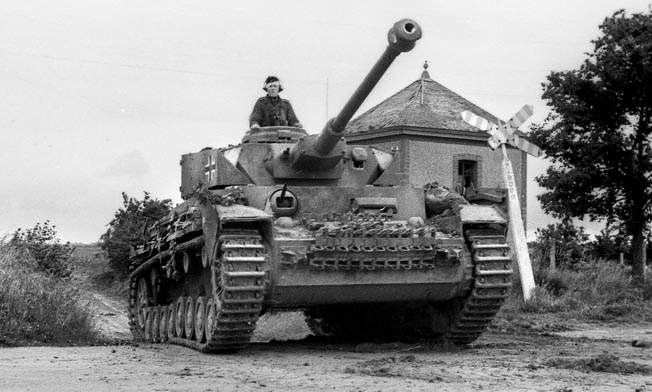
Montgomery’s next major bid to seize Caen was a multi-corps offensive launched on the evening of July 7, codenamed Operation Charnwood. First, the 16-inch guns of the venerable battleship HMS Rodneyshelled key roads leading into Caen, and then 467 RAF Lancasters and Halifaxes dropped 2,560 tons of bombs on the northern outskirts of the city. The aerial assault caused much devastation, destroyed several Orne River bridges, and reduced the Germans’ ability to resupply their forces in the northern part of the city. But, because the given bombing line was 6,000 yards ahead of the forward British positions as a safety margin, the high explosives fell three miles behind the main enemy fortifications.
At dawn the next morning, July 8, after an immense Royal Artillery barrage, men of the British 3rd and 59th and Canadian 3rd Infantry Divisions fought their way at great cost into the city. Supported by flail and flamethrowing Churchill and Sherman tanks of the 79th Armored Division and two Canadian armored brigades, the assault troops occupied the outskirts but failed to take the center. Despite the bombardments, the German panzers and grenadiers were ready and in strength when the infantry came in. Wreckage, craters, and rubble-clogged streets delayed the Allied troops.
Four weeks behind schedule, Caen—a virtual wasteland of smoking ruins where 2,000 civilians had died—was in British hands and isolated from the rest of the enemy positions in Normandy. But tenacious resistance by the panzer formations in the eastern half of the city denied Dempsey the routes he needed to push his weary Second Army across the defensible Orne River barrier and on to the Falaise Plain beyond.
Montgomery’s next offensive was to be a feint southwest of Caen on the day before Bradley’s long-awaited Operation Cobra in the St.-Lo-Falaise area. The American breakout was still delayed by bad weather, but Monty, unfazed, went ahead with Operation Goodwood to ensure that the Germans did not release panzers from the British eastern sector to block Cobra. His newest “colossal crack” was launched on July 18.
For three hours after dawn that day, the ground between Caen and Troarn to the east shuddered as 1,000 RAF Lancasters and Halifaxes dropped 6,000 tons of bombs on Panzer Group West positions along the River Orne from Colombelles to Manneville, and from Cagny to Emieville. Medium bombers of the U.S. Eighth and Ninth Air Forces followed—it was the heaviest air attack yet launched against ground troops. British artillery and naval gunfire also blasted the enemy lines. As the last of the medium bombers turned away at 7:45 that bright summer morning, Churchill, Cromwell, and Sherman tanks of Maj. Gen. George P.B. “Pip” Roberts’s British 11th Armored Division started rolling southward through cornfields behind a rolling barrage. The 29th Armored Brigade advanced in column of regiments through devastated terrain where Tiger tanks were buried or upended and shocked German soldiers wandered half-crazed. One soldier described the battlefield as “a vision of hell.”
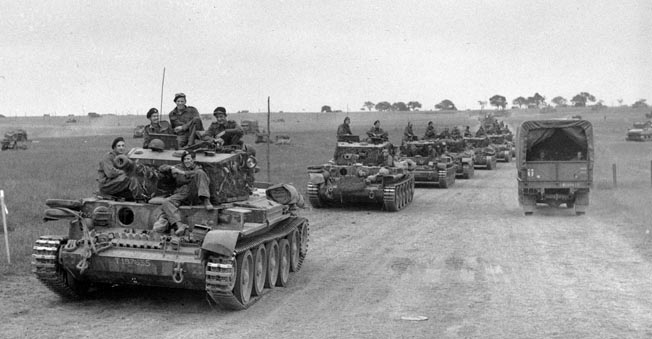
But many panzers and antitank guns had survived the Allied bombardments, and Wehrmacht discipline soon took hold. Colonel Hans von Luck, a regimental commander of the 21st Panzer Division, arrived on the battlefield straight from leave in Paris and hastily coordinated a defense. Panzer, artillery, and even Luftwaffe antiaircraft guns engaged and slowed the advancing British armor, and by the time the 11th Armored had forced its way to the foot of the Bourguebus Ridge, a minimal objective, it was mid-afternoon. As the British tanks began to climb the ridge, they were blasted by 76mm and 88mm fire from the crest. The leading squadron of the Fife and Forfar Yeomanry was incinerated on the spot, and the 23rd Hussars, coming to its rescue, was hit as hard.
A total of 126 tanks of the 11th Armored, more than half its strength, lay crippled, while the Guards Armored Division had lost 60. The casualties amounted to 1,500. Meanwhile, enemy reinforcements flowed into the battle area. After Dempsey’s army gained about three miles along the road to Falaise, fierce enemy resistance in depth blocked further progress. When a thunderstorm broke on the afternoon of July 20, Montgomery called off the effort. The British had lost a total of 4,000 men and 500 tanks, more than a third of the armor they had in Normandy.
“The attack we put in on July 18 was not a very good operation of war tactically,” admitted Dempsey, “but strategically it was a great success, even though we did get a bloody nose. I didn’t mind about that. I was prepared to lose a couple of hundred tanks, so long as I didn’t lose men.” But Goodwood was generally viewed as a failure, and Monty had worn the patience of Churchill and Eisenhower thin. He had wrongly assumed that he could make a rapid penetration through and beyond Caen and had grossly underestimated the enemy.
Yet he insisted that his grand design retained its logic. His long-suffering British and Canadian Armies had fought the best Wehrmacht formations to exhaustion, pinning the panzers to the eastern battlefield and preventing a counterthrust or threat to the planned American offensive.
Despite the gallantry and sacrifice shown there, the Battle of Caen would not go down in history as one of the British Army’s finest hours. But there were valid reasons for this, such as the superiority and resilience of the German armor and Monty’s need to conserve his limited manpower. He had experienced the slaughter on the Western Front in World War I, and needlessly wasting lives was not one of his much publicized faults.
On July 25, after carpet bombing by Eighth Air Force B-17s accidentally killed 111 American troops and wounded another 490, Bradley’s Operation Cobra got underway south of Carentan. His armor and infantry reached Avranches on July 30, opening the way into Brittany, and for the first time German resistance was actually broken. The enemy was unable to restore the situation. Patton’s new Third Army, meanwhile, was able to start its spectacular drive eastward against minimal opposition.
The success of Cobra—made possible by the British-Canadian sacrifices around Caen—and the exhilarating days in late July and early August 1944 when the Normandy campaign became a German rout, were to Montgomery the vindication of the overall strategy he had employed since the June 6 invasion. By August 25, the entire River Seine area below Paris was in Allied hands after 80 days of fighting—10 fewer than he had predicted in his D-Day briefings.
Monty stated simplistically that the campaign had gone exactly “according to plan,” but this was not true. It had, however, proceeded as he anticipated, with the Germans fiercely defending the direct route from Normandy to Paris, while the Americans wheeled to the south and east. By counterattacking at Mortain, Hitler had unexpectedly played into Montgomery’s hands by allowing the Allies to trap the larger part of the German armies in the Falaise pocket.
Monty had won the greatest Allied land battle of the war, ahead of schedule, but the bloody, protracted struggle at Caen and the failure of several offensives there tarnished his reputation. Criticism of his over-careful advance planning and caution had been mounting at Eisenhower’s headquarters, and Monty’s cocksure personality did not help matters.
A bitter dispute over strategy and command—part of the “broad front versus narrow front” controversy—erupted in late August between Montgomery and Ike. Monty was genuinely fond of the affable American general, a proven staff officer and inspired coalition leader who had no combat experience. But, like Lord Alanbrooke, chief of the Imperial General Staff, and many of Ike’s fellow officers, Monty lamented his lack of strategic skills.
Eisenhower assumed command of the Allied ground forces on September 1, 1944, and Monty reverted to command of the 21st Army Group alone. Ike denied that this was a demotion and said, “Montgomery is one of the great soldiers of this or any other war.” Churchill sought to placate Monty by promoting him to field marshal in recognition of his Normandy leadership.
Author Michael D. Hull has written for WWII History for many years on a variety of topics. He resides in Enfield, Connecticut.
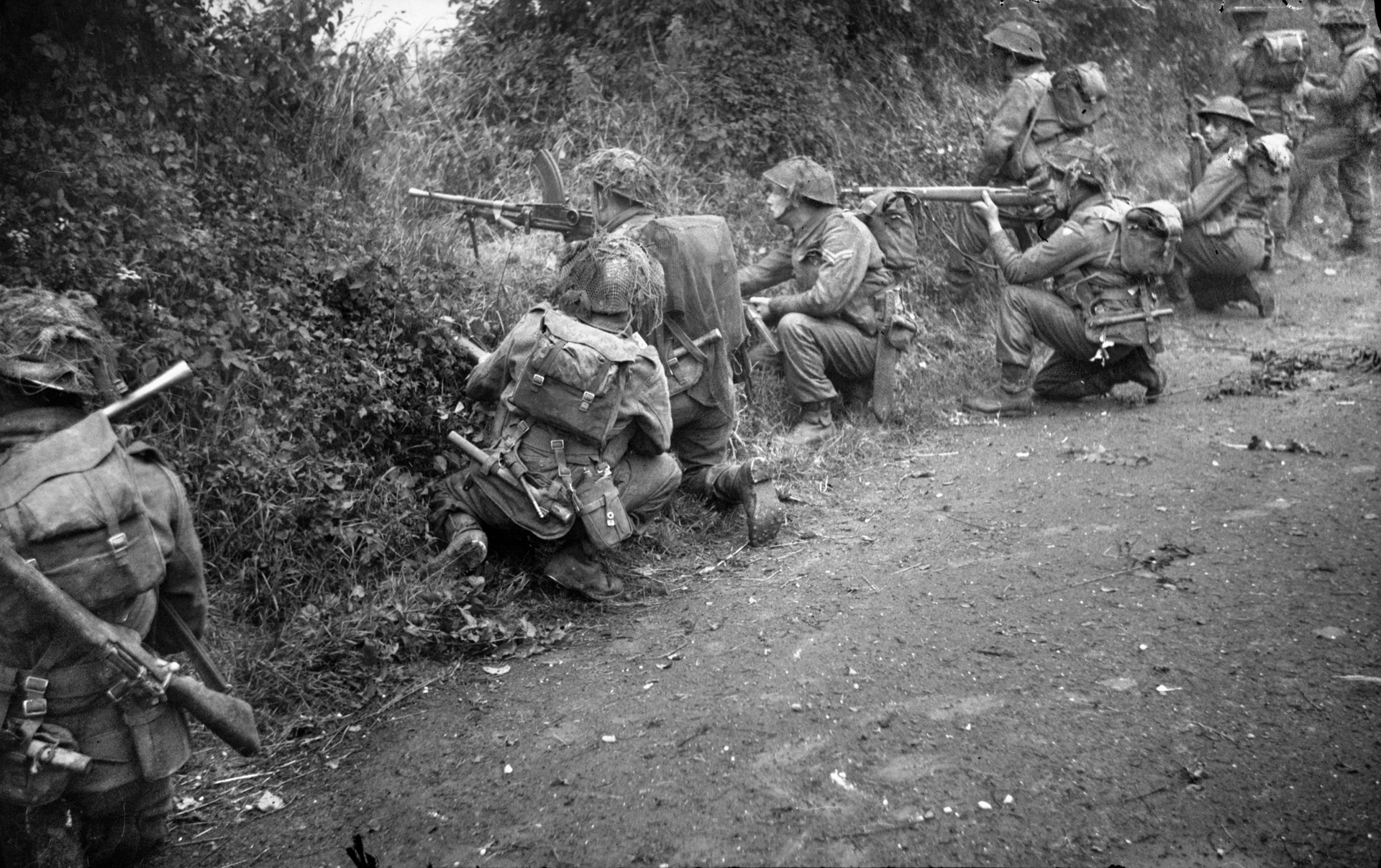
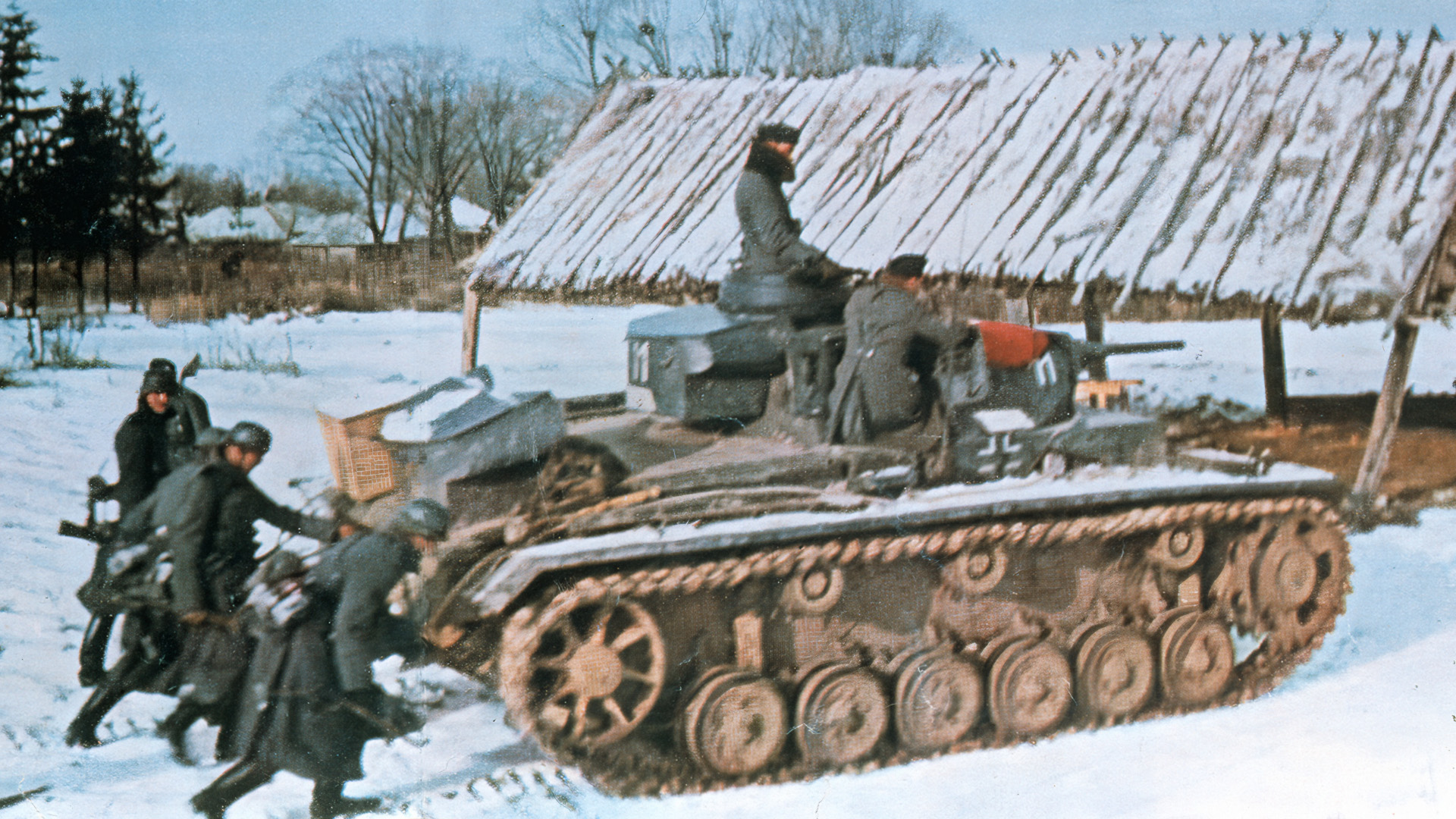
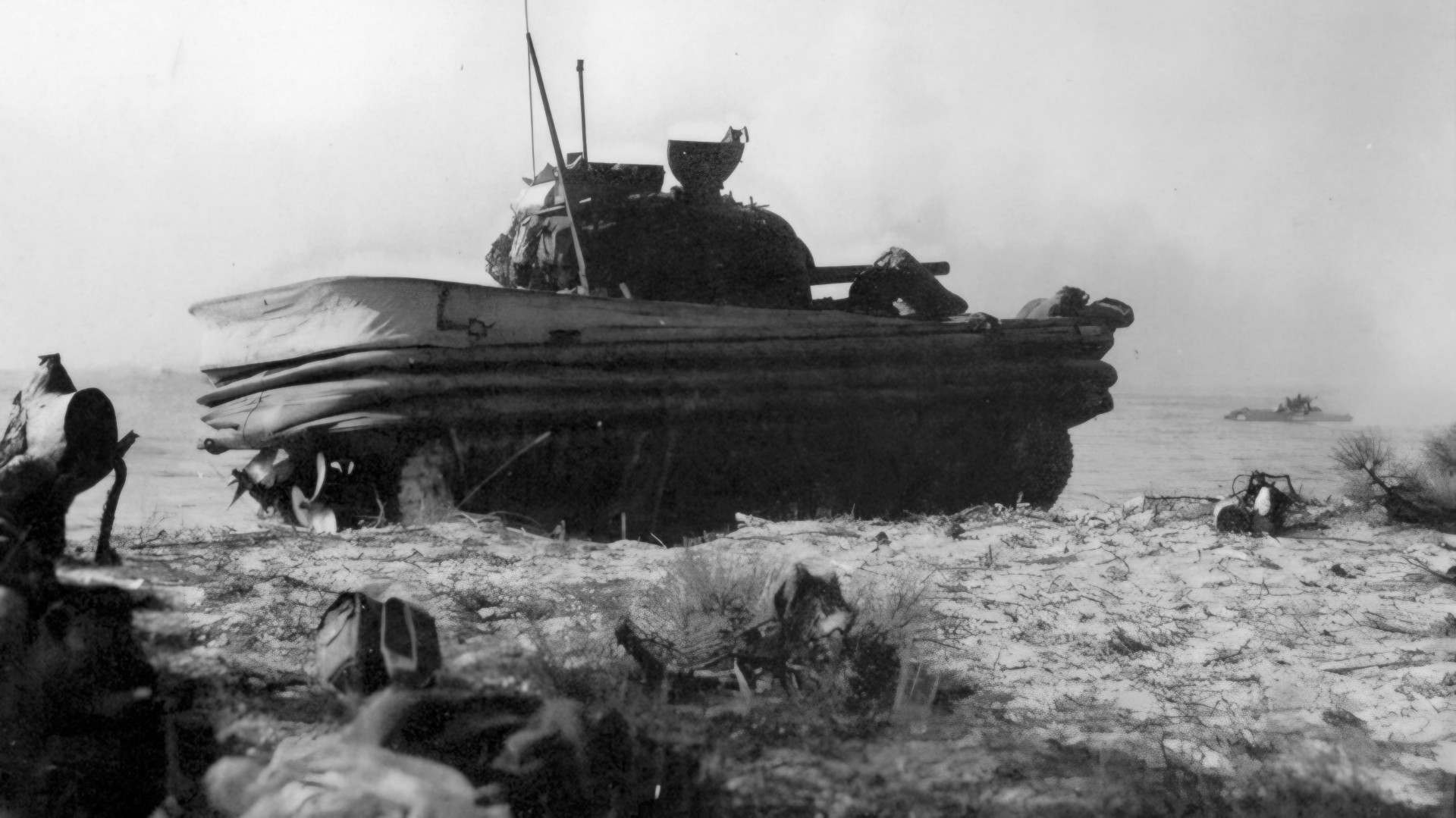
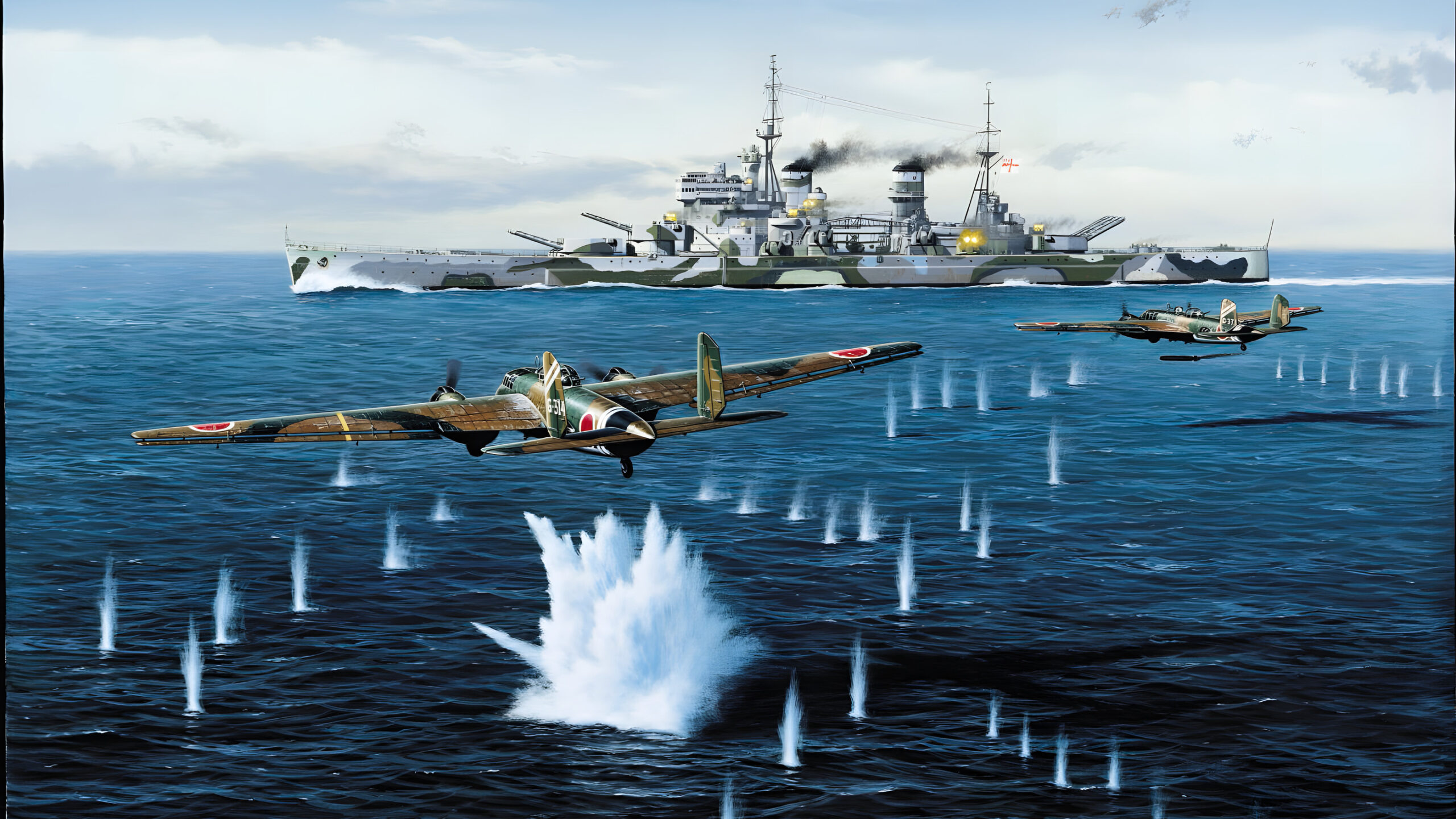
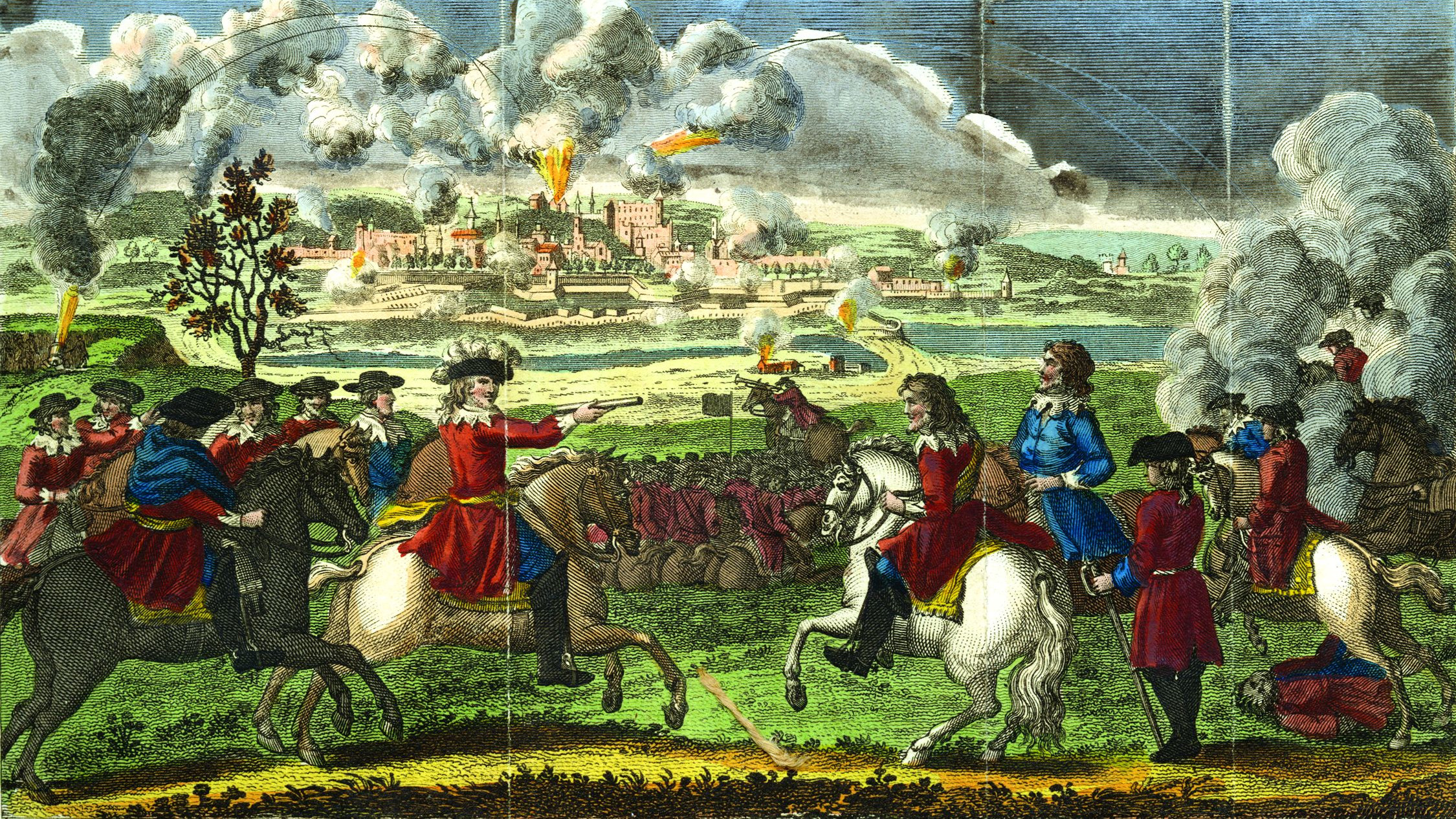
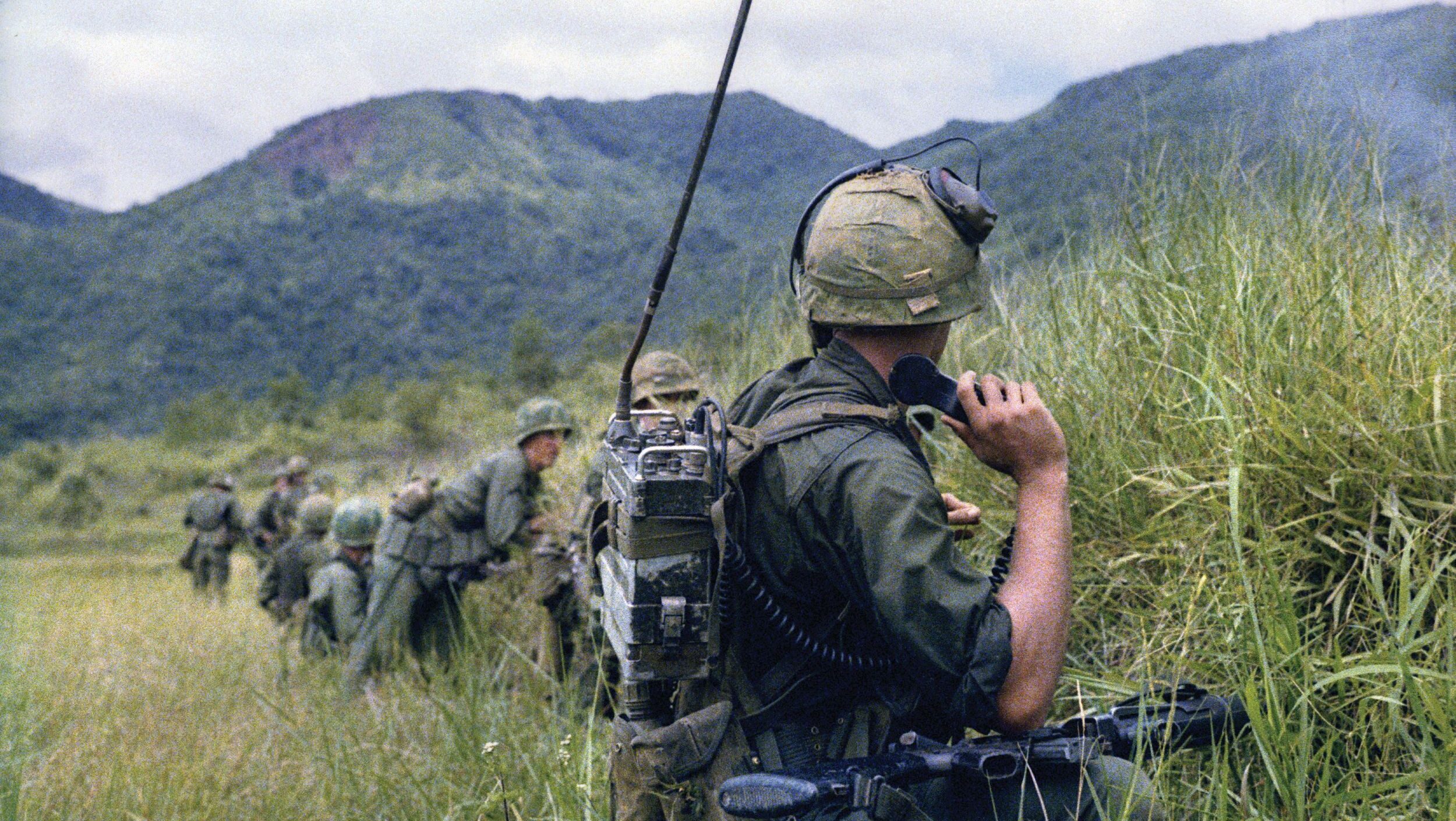
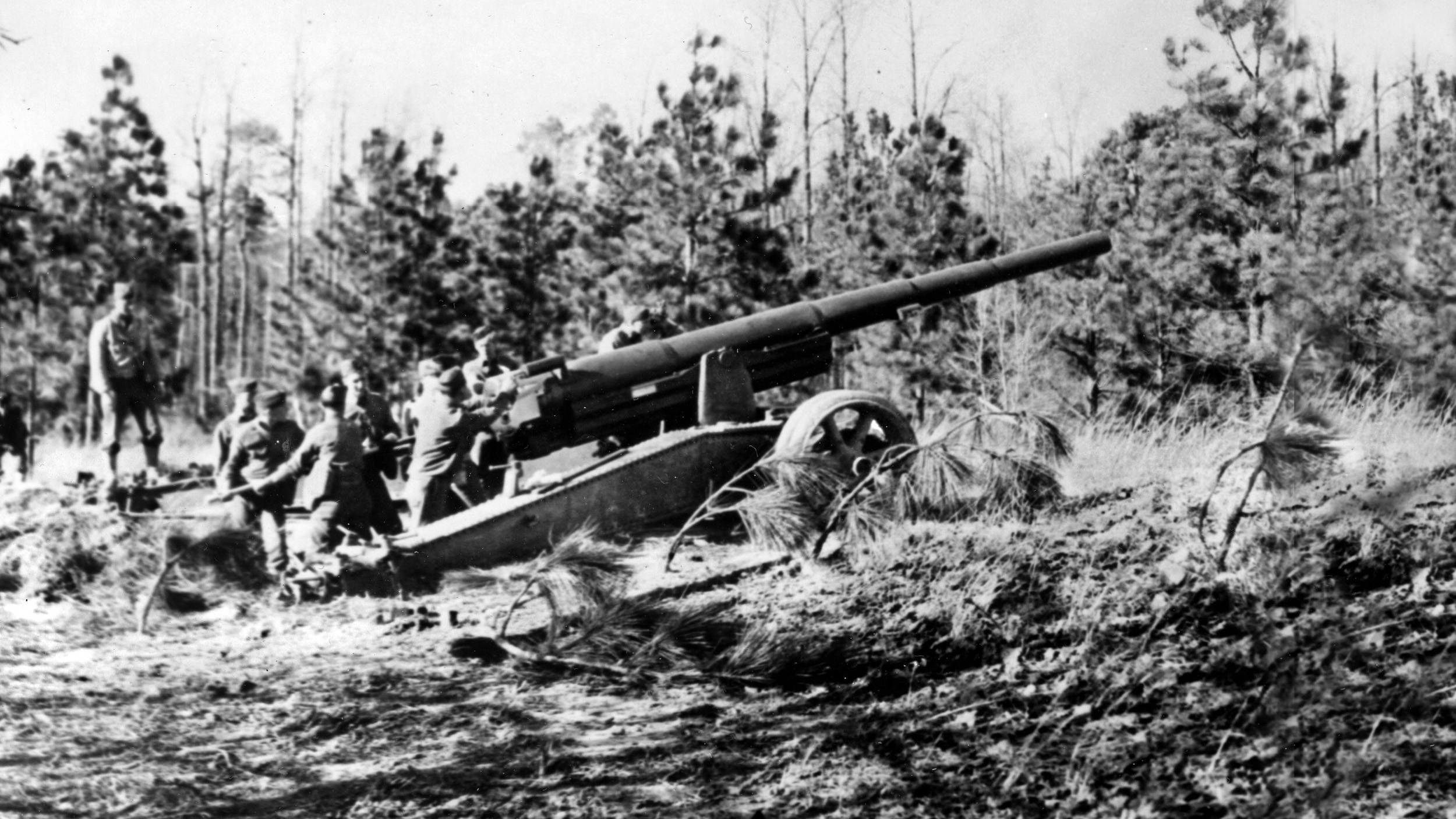
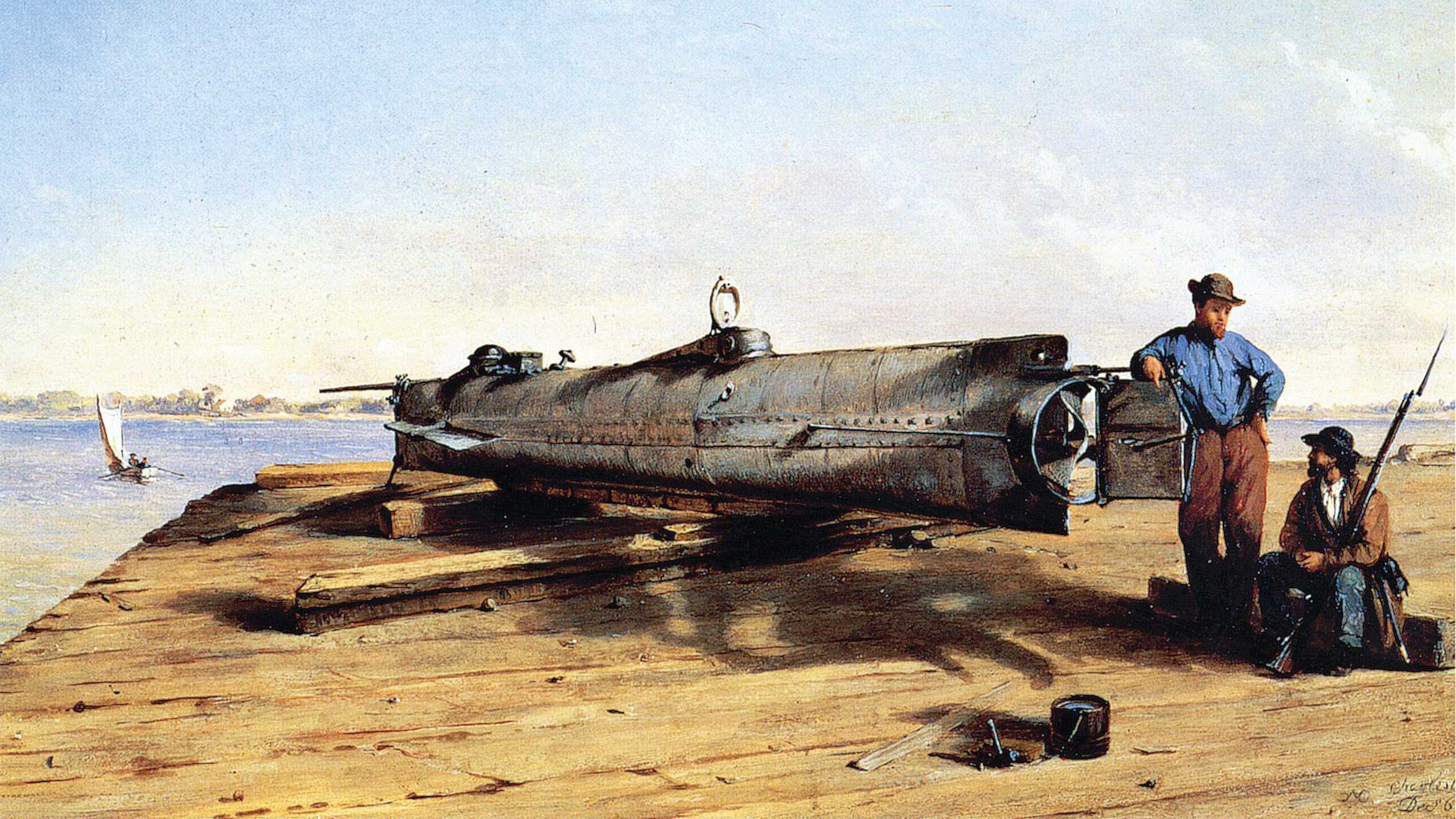
Join The Conversation
Comments
View All Comments